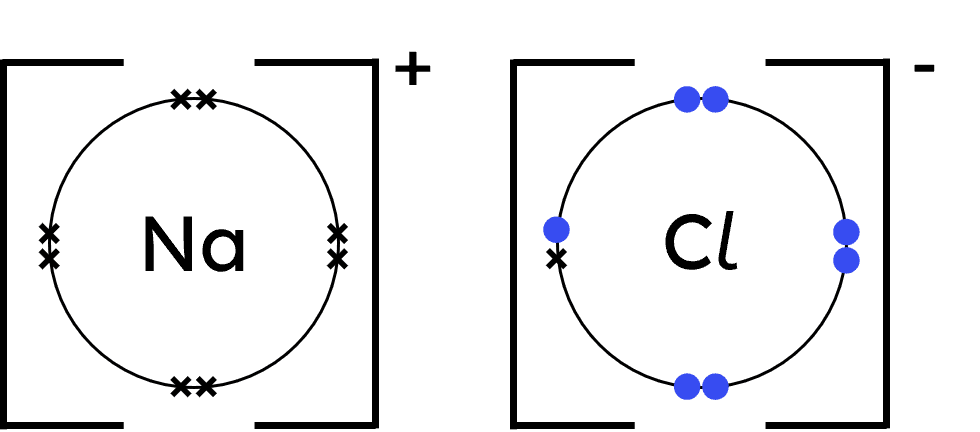Ionic diagrams for binary ionic substances
I can draw dot and cross diagrams for binary ionic compounds.
Ionic diagrams for binary ionic substances
I can draw dot and cross diagrams for binary ionic compounds.
These resources will be removed by end of Summer Term 2025.
Lesson details
Key learning points
- Dot and cross diagrams as a model for binary ionic substances
- Dot and cross diagrams show the empirical formula/ratio of atoms to show how electrons are transferred
- Ions are shown with full outer shells, square brackets, and a charge in the top right corner.
- Ionic compounds are neutral overall, so positive and negative charge must balance.
- When positive ions do not have the same magnitude of charge as negative ions, multiple of some ions will be required.
Keywords
Binary ionic substance - is made up of two different elements, one of which is a metal and the other a non-metal element.
Empirical formula - show the simplest whole number ratio of atoms of each element in a compound.
Ratio - can be used to determine the size of one quantity in relation to another.
Dot-and-cross diagram - is used to show how chemical bonds are formed between atoms. The electrons from one atom are shown as dots and the electrons from the other atom are shown as crosses.
Magnitude - is the size of a quantity, for example the size of the charge on the ion.
Common misconception
The ionic bond is the transfer of electrons and not the electrostatic forces of attraction between the ions. Dot and cross diagrams show the empirical formula of the lattice and not an ionic molecule.
Ensure students have a good understanding of how ions are formed, the arrangement of ions in a giant lattice structure and empricial formula before moving on to disucss using dot and cross diagrams to model ionic bonding.
To help you plan your year 10 combined science lesson on: Ionic diagrams for binary ionic substances, download all teaching resources for free and adapt to suit your pupils' needs...
To help you plan your year 10 combined science lesson on: Ionic diagrams for binary ionic substances, download all teaching resources for free and adapt to suit your pupils' needs.
The starter quiz will activate and check your pupils' prior knowledge, with versions available both with and without answers in PDF format.
We use learning cycles to break down learning into key concepts or ideas linked to the learning outcome. Each learning cycle features explanations with checks for understanding and practice tasks with feedback. All of this is found in our slide decks, ready for you to download and edit. The practice tasks are also available as printable worksheets and some lessons have additional materials with extra material you might need for teaching the lesson.
The assessment exit quiz will test your pupils' understanding of the key learning points.
Our video is a tool for planning, showing how other teachers might teach the lesson, offering helpful tips, modelled explanations and inspiration for your own delivery in the classroom. Plus, you can set it as homework or revision for pupils and keep their learning on track by sharing an online pupil version of this lesson.
Explore more key stage 4 combined science lessons from the Structure and bonding unit, dive into the full secondary combined science curriculum, or learn more about lesson planning.

Licence
Starter quiz
6 Questions
Exit quiz
6 Questions
Made of two different elements, one a metal and one a non-metal.
The size of a quantity.
Used to show how chemical bonds are formed between atoms.
Simplest whole number ratio of atoms of each element in a compound.



